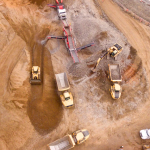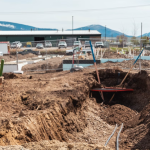Construction sites are inherently hazardous environments, and ensuring the safety of workers is paramount. Regular equipment inspection plays a crucial role in maintaining a safe work environment and preventing accidents. In this blog post, we’ll explore why regular equipment inspection is necessary for safety on construction sites.
1. Identifying Potential Hazards
Regular equipment inspection allows for the identification of potential hazards before they escalate into safety risks. By closely examining machinery and tools, inspectors can detect worn-out components, loose bolts, hydraulic leaks, electrical faults, and other issues that could compromise safety. Addressing these issues promptly helps mitigate the risk of accidents and injuries.
2. Preventing Equipment Failures
Equipment failures can have catastrophic consequences, resulting in injuries, damage to property, and project delays. Regular inspection and maintenance help prevent equipment failures by ensuring that machines are in good working condition. Detecting and repairing minor issues early on can prevent them from developing into major problems that could lead to accidents or breakdowns.
3. Ensuring Compliance with Regulations
Construction industry regulations and standards mandate regular equipment inspection to ensure compliance with safety requirements. Failure to adhere to these regulations can result in fines, penalties, and legal liabilities for construction companies. Regular inspections help demonstrate a commitment to safety and regulatory compliance, reducing the risk of legal consequences.
4. Protecting Workers
The primary purpose of inspection is to protect the health and safety of workers on construction sites. By maintaining equipment in safe working condition, employers create a safer work environment and reduce the risk of accidents and injuries. Regular inspection instills confidence in workers, reassuring them that their safety is a top priority.
5. Promoting a Safety Culture
Regular equipment inspection is an essential component of fostering a safety culture within construction companies. By prioritizing safety and conducting inspections proactively, employers demonstrate their commitment to protecting workers and preventing accidents. This helps create a culture where safety is valued, emphasized, and ingrained in everyday operations.
Conclusion
In conclusion, regular inspection is crucial for ensuring safety on construction sites. By identifying potential hazards, preventing equipment failures, ensuring regulatory compliance, protecting workers, and promoting a safety culture, regular inspection plays a vital role in mitigating risks and preventing accidents. Construction companies must prioritize equipment inspection as part of their overall safety management strategy to create a safer work environment for all stakeholders.


